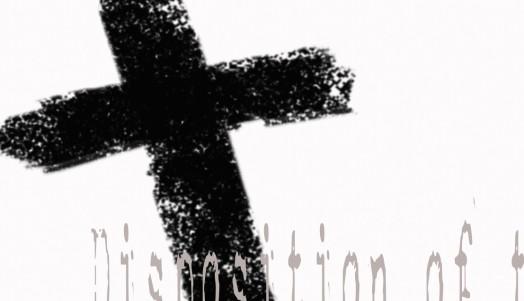
2 minute read
In the Beginning: The Book of John
(John 19:18-24 [HCSB])
18 There they crucified Him and two others with Him, one on either side, with Jesus in the middle. 19 Pilate also had a sign lettered and put on the cross. The inscription was:
Advertisement
JESUS THE NAZARENE
THE KING OF THE JEWS.
20 Many of the Jews read this sign, because the place where Jesus was crucified was near the city, and it was written in Hebrew, Latin, and Greek. 21 So the chief priests of the Jews said to Pilate, “Don’t write, ‘The King of the Jews,’ but that He said, ‘I am the King of the Jews.’ ”
22 Pilate replied, “What I have written, I have written.”
23 When the soldiers crucified Jesus, they took His clothes and divided them into four parts, a part for each soldier. They also took the tunic, which was seamless, woven in one piece from the top. 24 So they said to one another, “Let’s not tear it, but cast lots for it, to see who gets it.” They did this to fulfill the Scripture that says: They divided My clothes among themselves, and they cast lots for My clothing. And this is what the soldiers did.
Pilate writes the truth
Pilate once asked “What is truth?” (see lesson 85) and then inscribed it above the crucified Christ. He had his answer!
I believe that Pilate, like the rich young man in Matthew 19:21, knew in his heart that there was a specific path to peace but was unwilling to go the distance for it. We are no different.
In the current age, we tend to look only at immediate needs and material consequences; Pilate and the rich young man were looking at their feet, measuring each step by gain and loss, gauging their immediate survivability. In our own culture we run up against a similar “short sightedness.” We talk endlessly about 401k’s and wealth management, tallying our effectiveness by the number, while very little serious conversation takes place about the longer term positive (and eternal) consequences of a sound faith in Jesus Christ. Jesus is undoubtedly the most controversial decision anyone of us will ever make. And it does not matter what language we use, our King truly is Jesus! He presides over all that we do.
A plaque does not need to be nailed to a cross for such an assertion to be true; Truth is its own best evidence … In Christ things as simple as a tunic remain undivided. In Christ broken lives are made whole. Lambs prepared during the Passover in Exodus had no broken bones nor were Jesus’ bones broken at the crucifixion. Prevenient grace urges us to accept not just the attractive or convenient parts of Scripture, but all of who Jesus claims to be:
Jesus was not just a moral teacher or a charismatic rabbi; He is the Way, the Truth and the Life.




